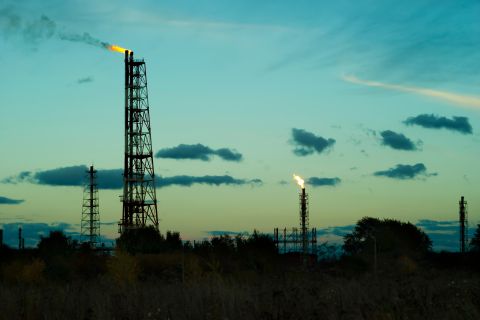Those of you placing bets on The Next Big Thing in offshore drilling technology may want to check the current odds on riserless drilling. This technology continues to evolve and had a recent success in the North Sea, with the first
 |
|
| The return flow is intercepted at the seabed and activity pumped to the surface, giving the same effect as if the drilling had been moved to seabed level. |
Riserless drilling has been under development for some time. According to the Offshore Technology Research Center (OTRC), “In 1996, three competing projects began aimed at mitigating many of the problems encountered in ultradeepwater drilling, including the narrow window between pore pressure and fracture gradient, high riser loads, high deck loads, and high costs of drilling fluids, etc. These three projects were conducted…in joint industry programs to develop the technology known as dual gradient drilling. All three projects achieved a dual gradient by placing a rotating diverter on top of the blowout preventer stack, which diverted the mud returns from the annulus to a set of seafloor pumps. These pumps then circulated the mud and cuttings back to the rig via an external return line. The marine riser was filled with seawater rather than mud as in the conventional case.”
OTRC points out that “Although these systems lowered the riser loads with a water-filled riser, the packages were still designed to be employed on fifth-generation drilling vessels using the existing riser system. Because these projects focused on deeper portions of the wells, massive, elaborate, and complex systems were developed.
“One dual gradient drilling application that has not been fully studied is the potential benefit of utilizing this technology in the top hole portion of the well.”
 |
|
| The riserless system uses a suction module and pump to collect drilling mud and cuttings at seabed level, and sends them to the surface via a flexible hose. (All images courtesy of Total E&P UK PLC) |
RMR technology, developed by Norway-based
The company claims that “use of RMR technology is growing rapidly. More than 20 wells have been drilled in the
RMR has been deployed in water depths of up to 1,312 ft (400 m).
Recommended Reading
Darbonne: ESG, ‘Oh So 2022,’ Reduced to Table Stakes?
2024-02-11 - ESG champion BlackRock is paring, while Exxon Mobil’s growing. Today, ESG is just table stakes.
Women in Energy: Here’s to Ms. Flat-Bottomed Paper Bag Inventor
2024-03-10 - A salute to the women of genius, including ‘Ms. Plain English Computer Language Inventor’ and ‘Ms. Parity is Not Conserved in Weak Interaction Discoverer.’
Column: There’s Methane to Our Madness
2024-01-30 - The EPA’s methane rule will likely face resistance—but it shouldn’t.
Hart Energy’s Influential Women in Energy: A Woman of G.R.I.T.
2024-03-07 - When Lara Jones was at her lowest point, she developed a system to transform her fears into action. Now, her mission is to share what she learned.
Women in Energy: Diversify or Die
2024-03-08 - The oil and gas industry may be at risk of losing the innovation race if women remain sidelined.





